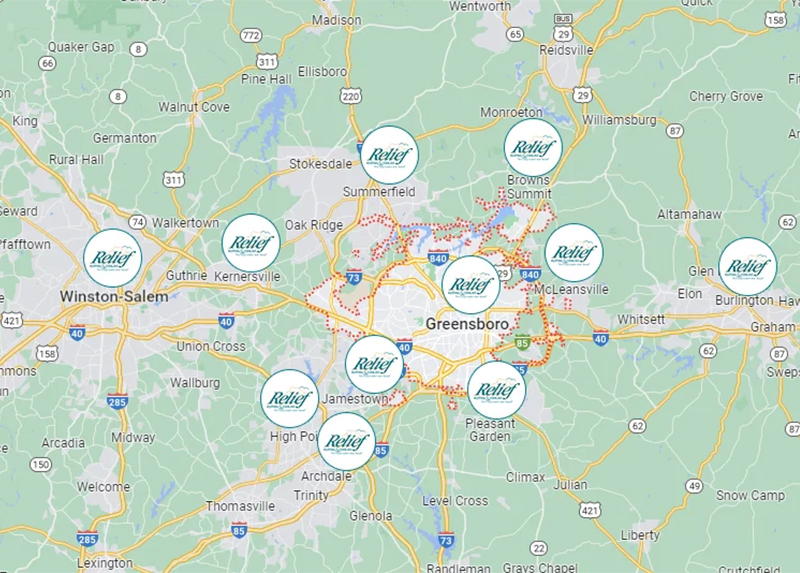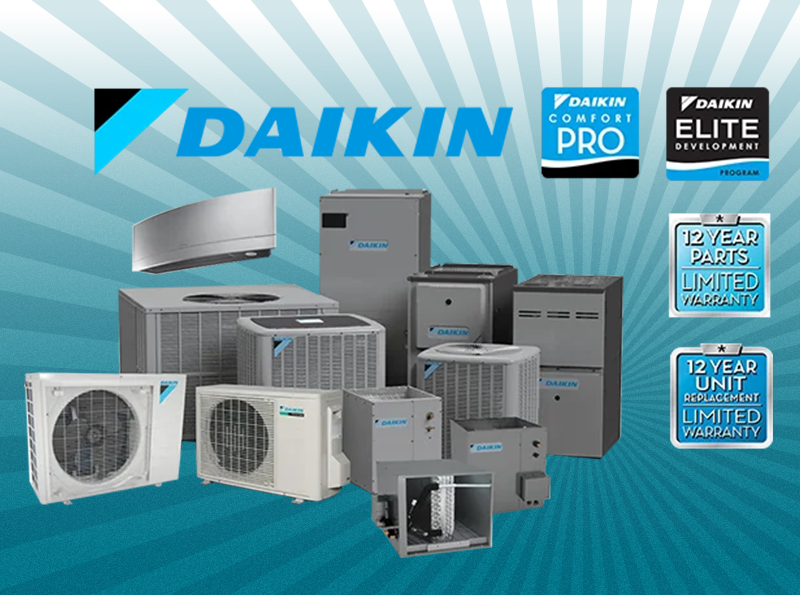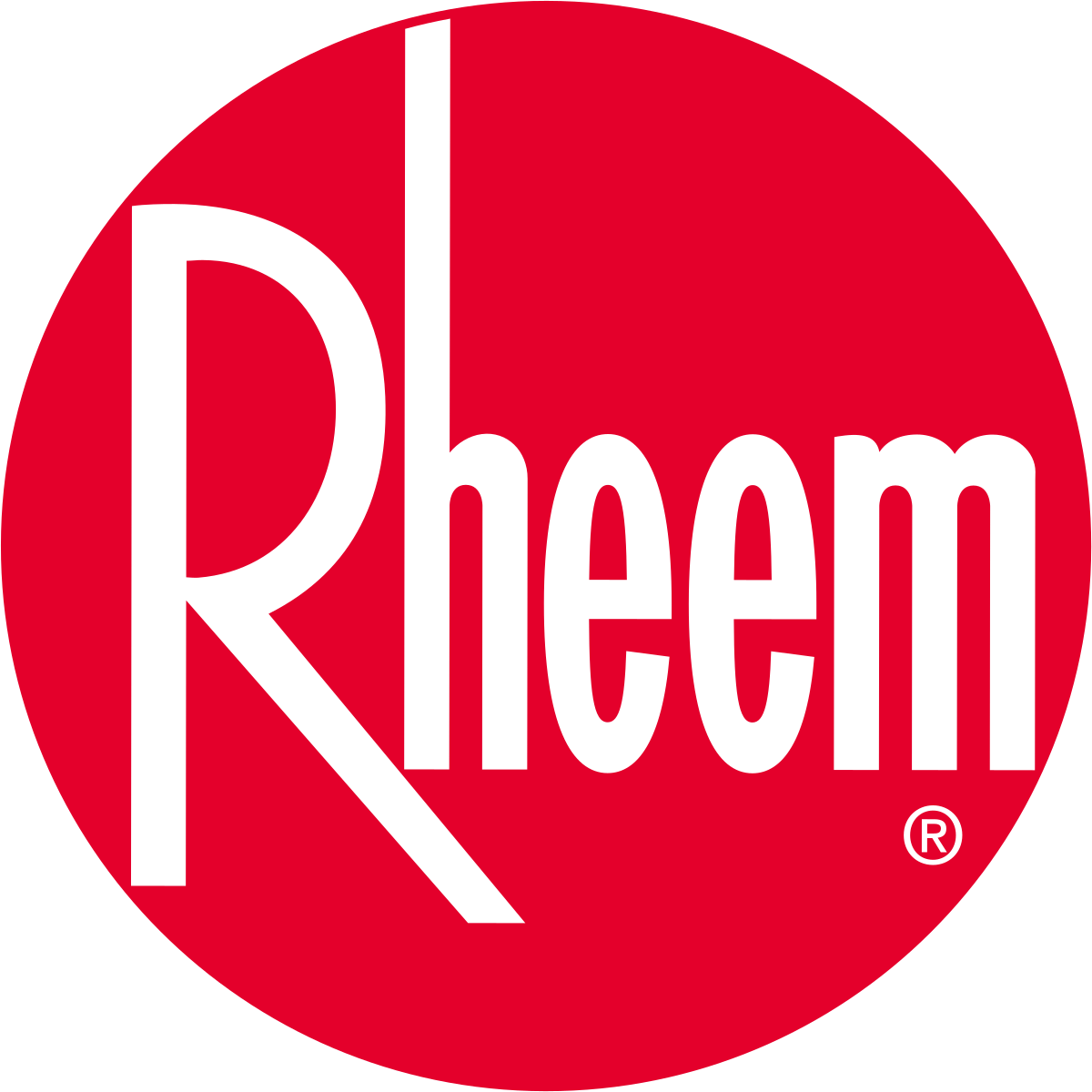

HVAC Company in Greensboro, North Carolina
Licensed Climate Control Professionals Serving the Piedmont Triad
At Relief Heating And Cooling, we’ve been providing year-round comfort to homes and businesses in the Triad since 2007. Whether it’s the heat of summer or the chill of winter, our experienced, family-owned team is here to keep your property comfortable, safe, and efficient. From installations and replacements to repairs and tune-ups, we focus on finding solutions tailored to your unique needs, all while using high-quality materials and parts.
See what Relief Heating And Cooling can do to take your indoor comfort to the next level – call our Greensboro office at (336) 559-7992 or contact us online to request your free estimate!

When It Comes to Comfort, We Don’t Cut Corners!
-
Veteran & Family-OwnedAs a veteran-owned, family-run business, we’re proud to serve our community with honesty and care.
-
Licensed, Insured & VettedYou can count on our team. We’re fully licensed, insured, and vetted to keep your HVAC in good hands.
-
Personalized Service & CareWe treat your home like it’s our own, with thoughtful solutions and a personal touch every step of the way.
-
100% Satisfaction GuaranteeYour satisfaction is our priority! That’s why every service comes with a 100% satisfaction guarantee.
-
Backed By a WarrantyOur work is built to last, and backed by warranties that give you extra peace of mind.

Quality Heating & Cooling Services Year Round
How Can We Help You?
A Family Business Built on Comfort & Care
What sets us apart isn’t just our technical expertise – it’s our genuine care for the families and enterprises we serve. We’re a veteran-owned, licensed, and insured local company dedicated to building lasting customer relationships. When you call Relief Heating And Cooling, you’re talking to real people who understand what comfort means to you.
-
BlogDiscover expert tips and HVAC advice when you visit our blog.
-
Maintenance PlansExplore plans to keep your system running smoothly.
-
FinancingExplore flexible payment options that fit your budget.
-
ShopShop our selection of reliable HVAC products today.
Reliable, Trustworthy Comfort in Every Season
Our comprehensive HVAC services cover everything you need to maintain a healthy and comfortable environment. We specialize in AC and heating installations, repairs, and maintenance, along with advanced solutions like ductless mini-split systems, indoor air quality enhancements, and emergency services. Additionally, we’re Daikin Comfort Pro/Daikin Elite Dealers and certified Coleman Dealers, which means that our training comes directly from some of the top manufacturers in the industry. With fully stocked trucks and trained technicians who participate in ongoing development, we always arrive at your door ready to handle your service efficiently and effectively.


Our Customers Stay Comfortable
We're Rated 4.9 Stars on Google with 315+ Google Reviews!
-
Quick & Efficient
"The company overall was quick and efficient in assigning a technician. Matthew was polite, friendly, punctual, thorough, and knowledgeable. He made the whole process much easier."- Karin E. -
They Went Above & Beyond
"We are so glad we decided to work with Relief! The staff was knowledgeable and communicative from our very first call and went above and beyond to make sure we had a great experience."- Courtney L. -
Highest Professionalism & Ethics
"I love this veteran-owned, family-operated business! There are two family generations working in this company, and they are all fabulous. This is a local company that operates with the highest professionalism and ethics."- Rick I. -
We Made the Right Decision
"Very professional, respectful, reliable, and knowledgeable. We replaced our air conditioning and furnace system. They had it in full operation within a few hours. We definitely made the right decision."- Patricia M. -
Attention to Detail
"The technicians who replaced my unit were very professional. They knew what they were doing and worked tirelessly until the job was done. I am very satisfied with their work ethic and attention to detail."- Emily M. -
Honest & Friendly Service
"Top-notch professionals who give honest, friendly service at a reasonable price. I will be calling Relief Heating And Cooling for any future HVAC needs and recommend them highly!"- Alphonse U. -
Best Family-Owned Company
"One of the best family-owned companies I have ever worked with. They take their time to be sure you fully understand and are okay with the work they are doing. Their follow-up is impeccable!"- Dana A. -
Very Impressed
"Very impressed with their responsiveness, efforts to keep me updated, and openness about options. Mr. Harris was competent, respectful, and honest. I could not ask for more."- Ervin K. -
Excellent Customer Service
"On time and thorough explanation of services. Very polite and willing to answer questions. The customer service staff is excellent. From timely callbacks and answering questions, they are always patient."- Charmin S.
Featured Manufacturer
We Are a Proud Daikin Comfort Elite Dealer
-
What is the Daikin Comfort Promise?To provide you with comfort for life which is represented and reinforced in the Daikin Comfort Promise. If, for any reason, our company has not met your expectations within one year of your equipment or system installation, we will return to your house to resolve any issues you have with your installation at no cost to you. As part of formally maintaining the Daikin Comfort Pro distinction, we will make all reasonable efforts to resolve any concerns you have within one year of your equipment installation. With the Daikin Comfort Promise, you can have peace of mind that we will continue to earn your business well after the sale.
-
What is the Daikin Difference?The Daikin Difference is redefining home comfort with some of the most technologically and aesthetically advanced solutions. Our energy-intelligent systems provide an unprecedented level of individual comfort and control. Beyond our products and solutions, our commitment to personal service and manufacturing in North America is what makes us stand out from the pack, leading with air intelligence. User-friendly designs and our passion for innovation is the hallmark of Daikin. As a leader in our industry, our products provide high-efficiency solutions through zoning capability, advanced designs, and easy, reliable service.
-
What is the Daikin worry-free 12-year warranty?Daikin systems are backed by comprehensive warranties, including a 12-year parts warranty on all products. Select Daikin products, such as furnaces, offer even more coverage, with 12-year unit replacement and lifetime heat exchanger warranties in addition to the standard parts warranty. To determine the exact warranty details for your specific Daikin product, speak with one of our experts.
-
What rebates does Daikin offer?Daikin frequently offers rebates and incentives on its heating and cooling systems. The specific rebates available will vary based on location, time of year, and product. It is best to contact your local Daikin dealer to inquire about current rebates in your area and to see how you can take advantage of these offers. Your local dealer will have the most up-to-date information on Daikin rebates and will be able to provide guidance on how to qualify for them. Our Daikin HVAC system includes Daikin inverter air conditioners, Daikin Mini Split, Daikin AC, Daikin Furnaces, and Daikin rebates are among the best on the market, offering top-of-the-line features and energy-efficient options.


Industry-Leading Brands We Use
We Service All Makes & Models
On-Time Service, Packed Up & Ready to Go 24/7
Book Online or Call (336) 559-7992 Today!


















